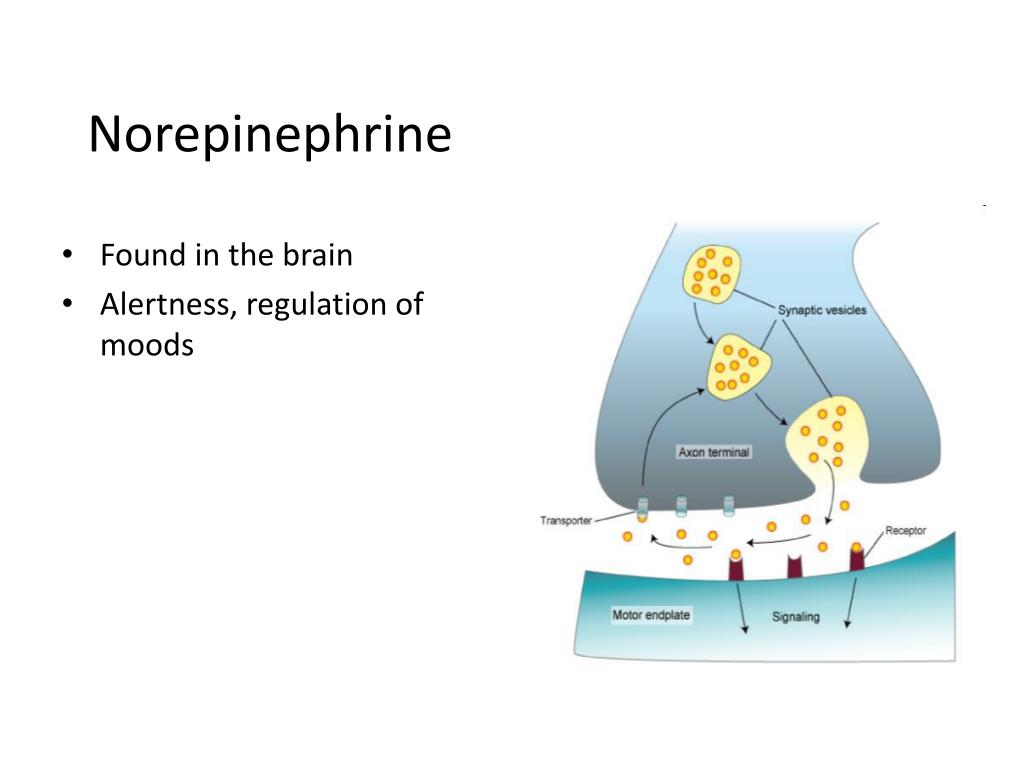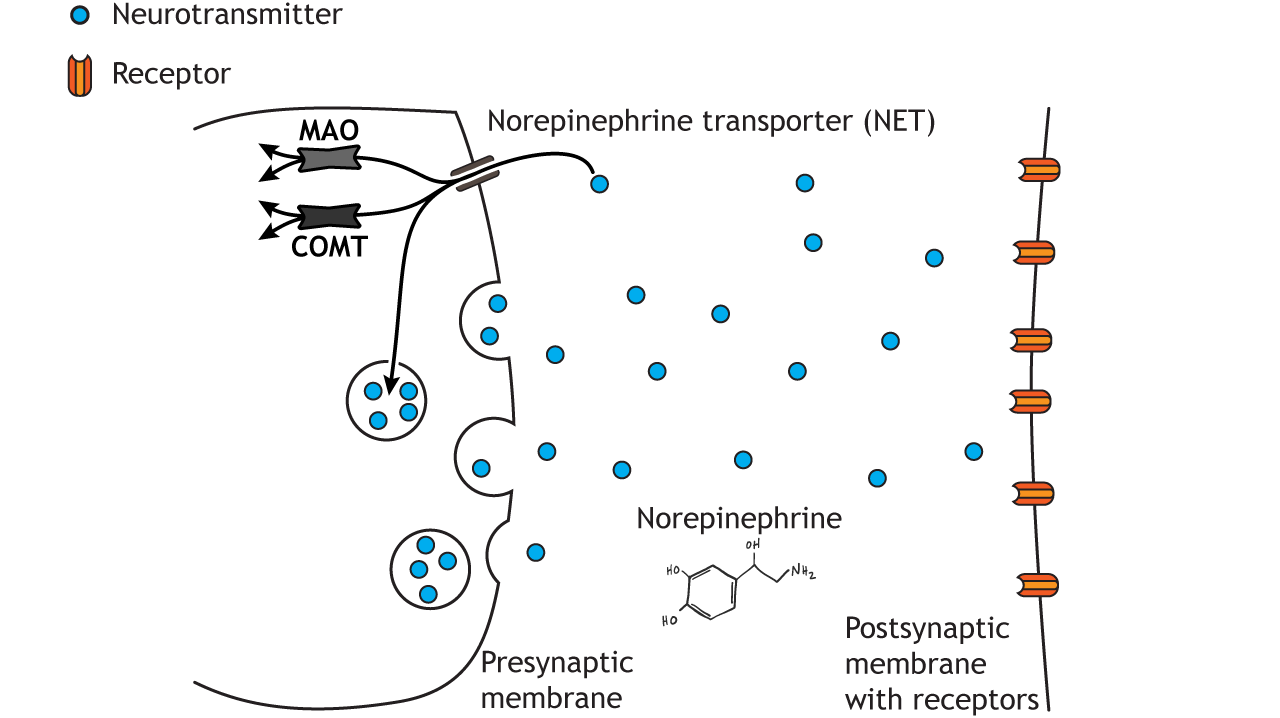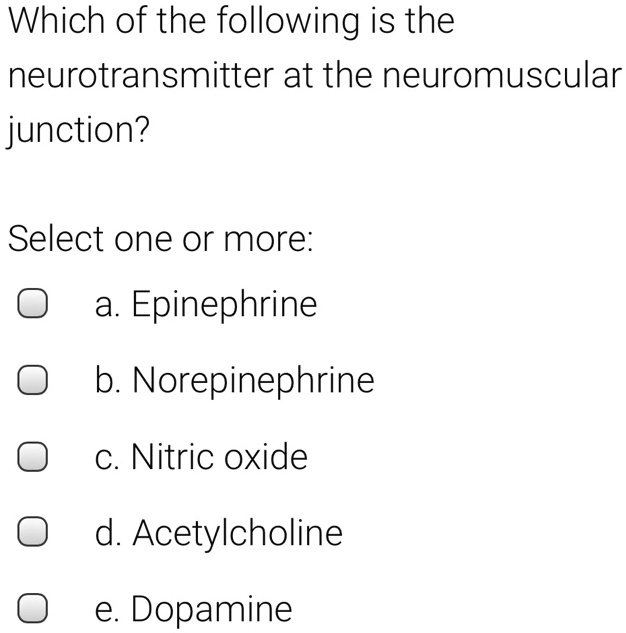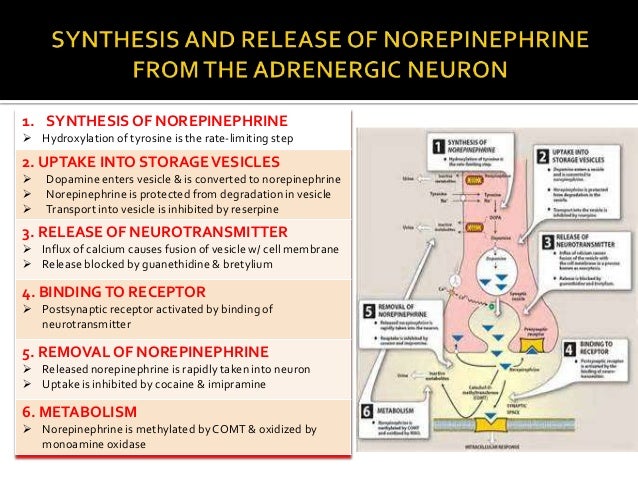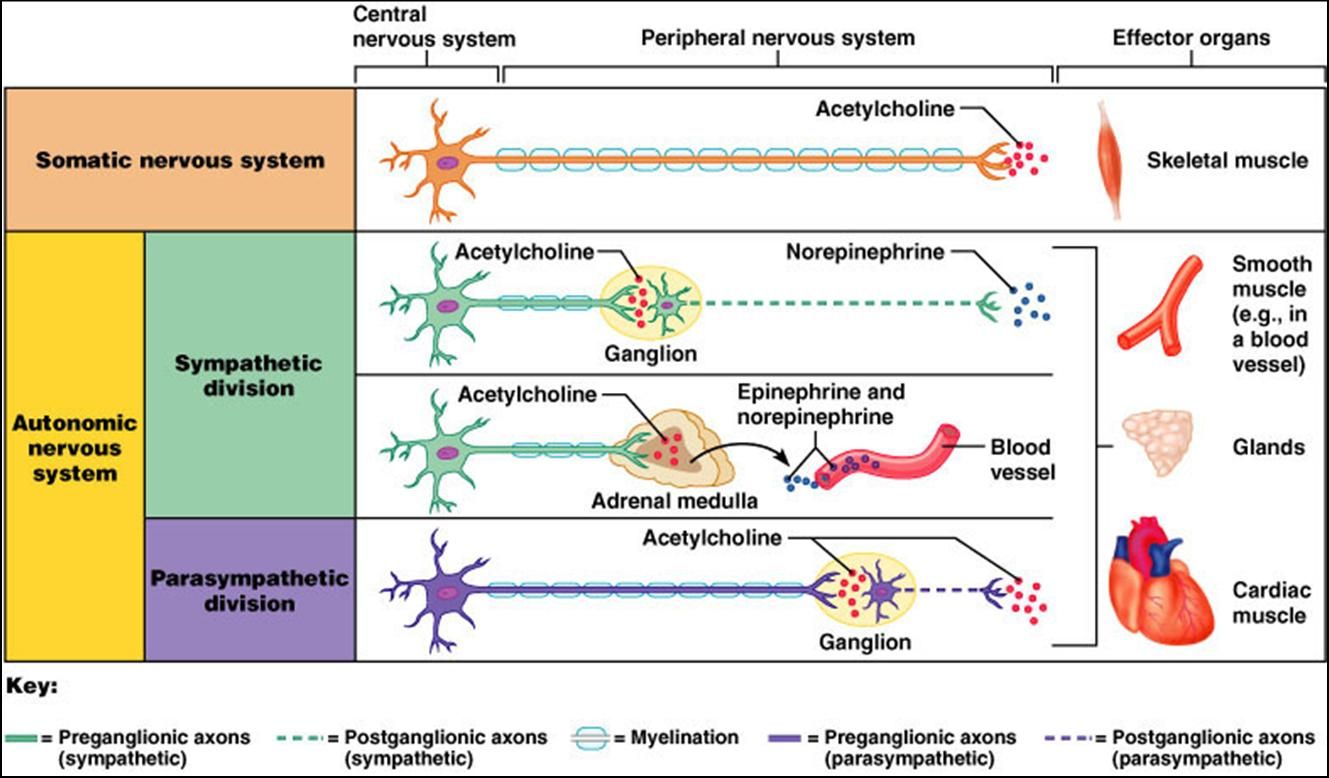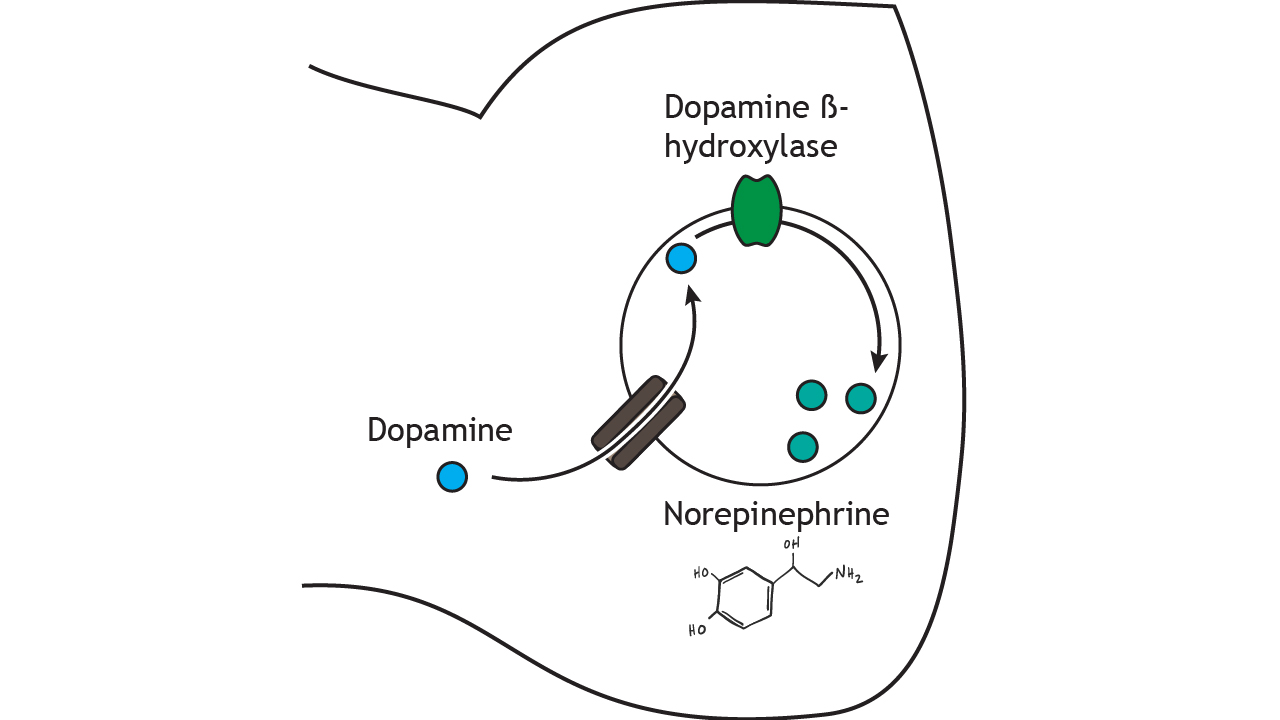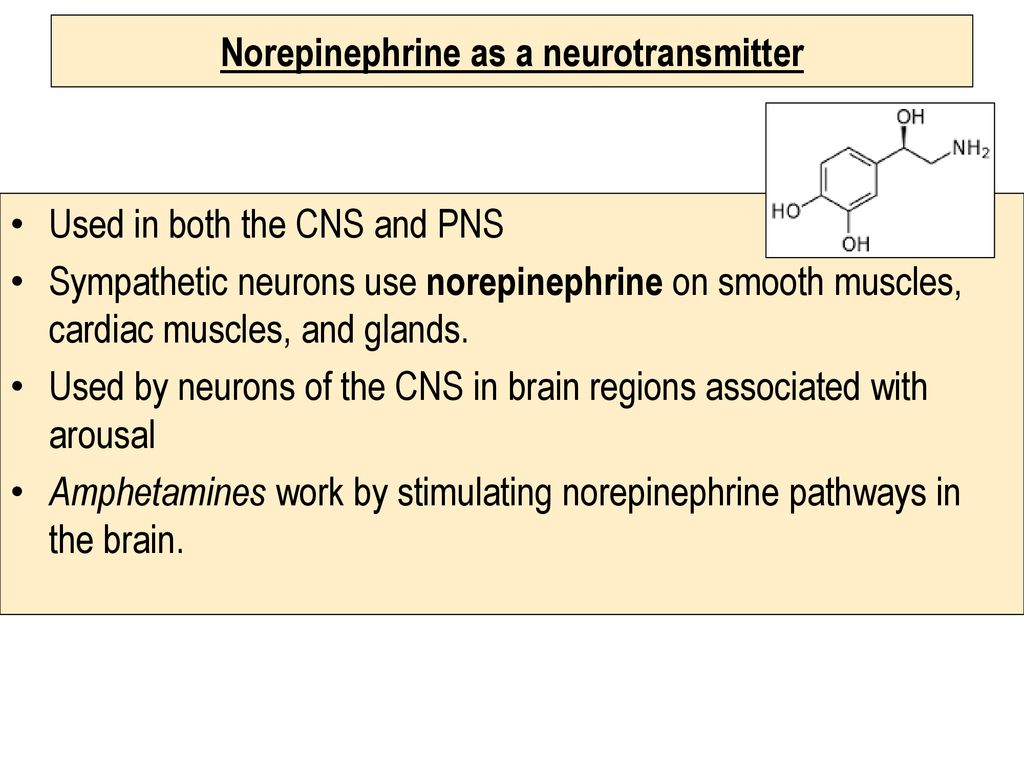Which Of The Following Releases The Neurotransmitter Norepinephrine
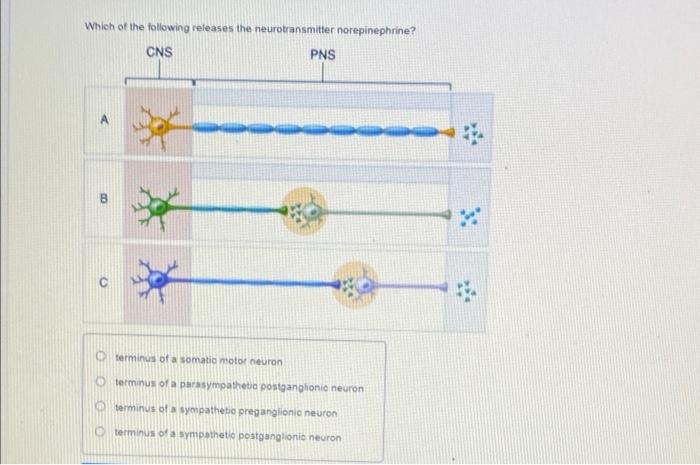
The human body, a marvel of biological engineering, relies on a complex network of chemical messengers to orchestrate countless functions. Among these critical messengers is norepinephrine, a neurotransmitter and hormone central to alertness, focus, and the body's response to stress. Pinpointing the exact cellular origins of this crucial compound is a subject of ongoing and vital research, with implications for understanding and treating a range of neurological and psychological conditions.
This article delves into the specific cells and systems responsible for releasing norepinephrine, dissecting the intricate pathways involved in its synthesis, storage, and secretion. We will explore the primary source, the locus coeruleus, a small but powerful brain structure, as well as the sympathetic nervous system's role in releasing norepinephrine peripherally. Understanding these origins is paramount for developing targeted therapies for conditions ranging from depression and anxiety to ADHD and post-traumatic stress disorder (PTSD).
The Locus Coeruleus: Norepinephrine's Central Hub
The locus coeruleus (LC), a nucleus located in the brainstem, is considered the primary source of norepinephrine in the brain. This relatively small structure, whose name literally means "blue spot," projects widely throughout the brain, influencing regions crucial for attention, arousal, and emotional regulation. Its significance in cognitive function and mental health is undeniable.
The LC's noradrenergic neurons synthesize norepinephrine from dopamine through a series of enzymatic reactions. These neurons then package the neurotransmitter into vesicles, small sacs that store and protect it until a signal triggers its release. When activated, these neurons fire, releasing norepinephrine into the synaptic cleft, the space between neurons.
This release allows norepinephrine to bind to adrenergic receptors on target neurons, initiating a cascade of intracellular events that ultimately alter neuronal activity. The effects of norepinephrine released from the LC are widespread and diverse, impacting everything from vigilance and cognitive performance to mood and memory consolidation.
Regulation of Locus Coeruleus Activity
The activity of the locus coeruleus is tightly regulated by a variety of factors, including sensory input, stress, and other neurotransmitter systems. For instance, novel or salient stimuli tend to activate the LC, increasing norepinephrine release and promoting alertness. This is a critical component of the body's "fight-or-flight" response.
Furthermore, the LC receives inhibitory input from other brain regions, such as the prefrontal cortex and the ventrolateral preoptic nucleus. These inhibitory signals help to maintain a balance in noradrenergic activity, preventing excessive or inappropriate norepinephrine release. Dysregulation of this delicate balance is implicated in a number of neuropsychiatric disorders.
The Sympathetic Nervous System: Norepinephrine in the Periphery
Outside the brain, the sympathetic nervous system (SNS) also relies heavily on norepinephrine as its primary neurotransmitter. The SNS, part of the autonomic nervous system, controls many of the body's involuntary functions, including heart rate, blood pressure, and respiration. Norepinephrine mediates the SNS's effects on these functions.
Sympathetic nerve fibers, originating in the spinal cord, project to various organs and tissues throughout the body. At these nerve endings, norepinephrine is released in response to sympathetic nerve stimulation. This release triggers a variety of physiological effects, preparing the body for action or stress.
For example, norepinephrine released by the SNS increases heart rate and blood pressure, diverting blood flow to muscles and increasing oxygen supply. It also dilates the pupils, relaxes the airways, and inhibits digestion. These effects are all geared towards enhancing the body's ability to cope with a perceived threat or challenge.
Adrenal Glands and Norepinephrine Release
The adrenal glands, located atop the kidneys, also play a crucial role in norepinephrine release, particularly in response to stress. The adrenal medulla, the inner part of the adrenal gland, contains specialized cells called chromaffin cells. These cells synthesize and secrete both norepinephrine and epinephrine (adrenaline) into the bloodstream.
In response to stress, the hypothalamic-pituitary-adrenal (HPA) axis is activated, leading to the release of norepinephrine and epinephrine from the adrenal medulla. These hormones then circulate throughout the body, amplifying the effects of the SNS and further preparing the body for action. The release of norepinephrine from the adrenal glands contributes significantly to the physiological response to stress.
Clinical Implications and Future Directions
Understanding the cellular origins of norepinephrine is critical for developing effective treatments for a wide range of disorders. Dysregulation of the noradrenergic system has been implicated in depression, anxiety, ADHD, PTSD, and Alzheimer's disease. Targeting specific noradrenergic pathways may offer novel therapeutic avenues.
For example, selective norepinephrine reuptake inhibitors (SNRIs) are commonly used to treat depression and anxiety by increasing the availability of norepinephrine in the synaptic cleft. These medications can help to improve mood, reduce anxiety, and enhance focus. However, further research is needed to develop more targeted and effective noradrenergic therapies with fewer side effects.
Furthermore, research is ongoing to explore the role of the locus coeruleus in various cognitive and emotional processes. Advances in neuroimaging techniques and genetic studies are providing new insights into the function and regulation of the LC. This understanding could lead to the development of novel interventions for conditions characterized by impaired attention, arousal, and emotional regulation. The future of treating neurological and psychological conditions may very well depend on unraveling the complexities of the noradrenergic system.

